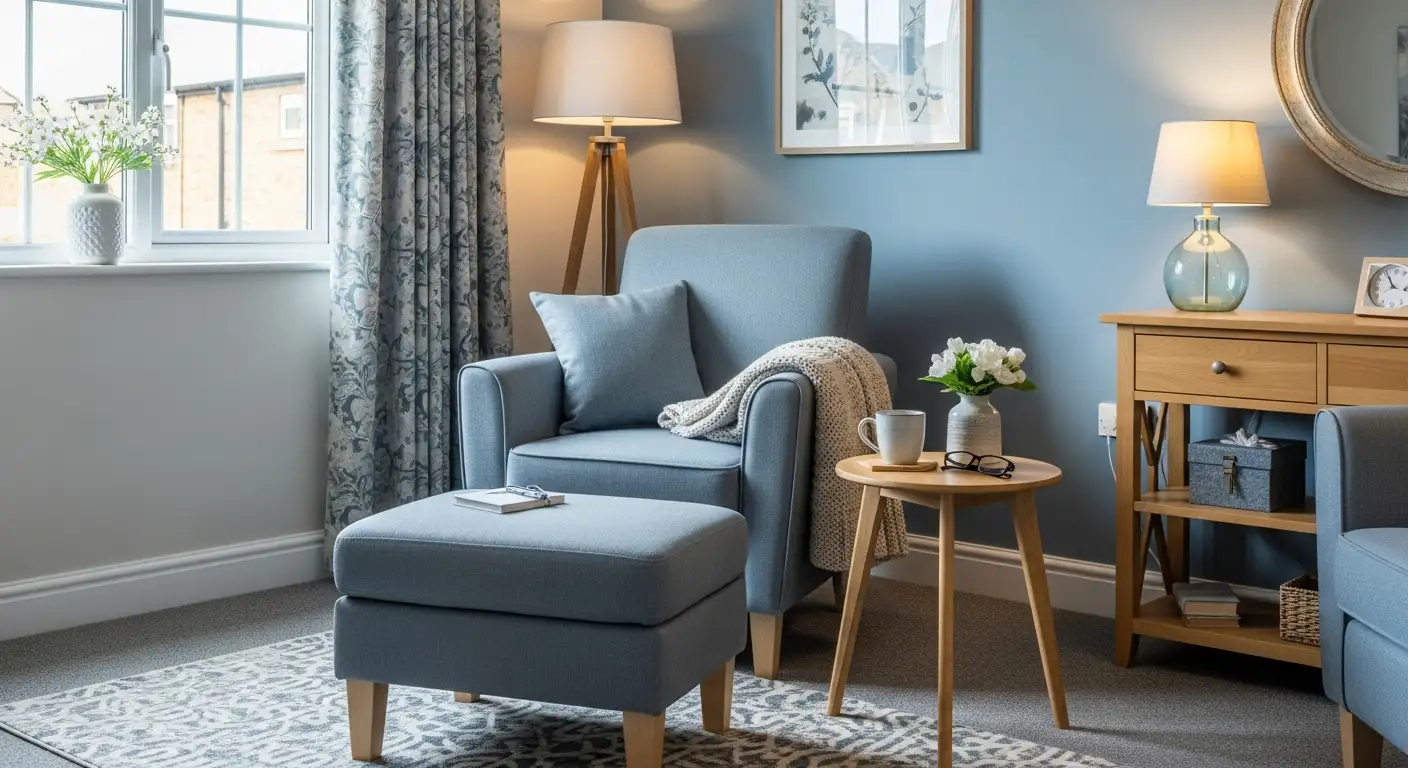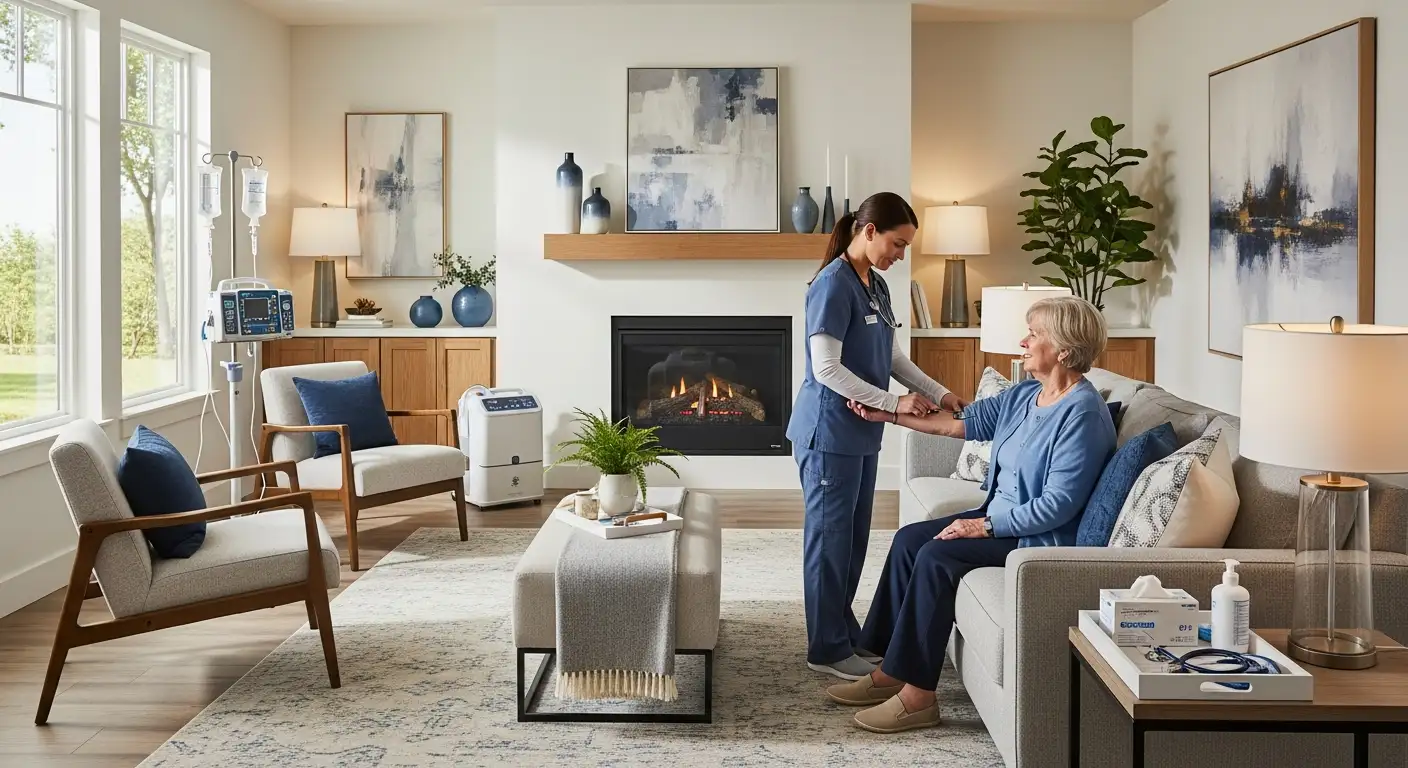Enhancing Home Mobility for Seniors
As seniors age, maintaining mobility becomes increasingly important for their overall well-being and independence. Making appropriate home modifications can significantly enhance mobility and reduce the risk of accidents. In this section, we'll explore the importance of home modifications and the impact of mobility challenges on seniors.

Importance of Home Modifications
Home modifications play a crucial role in improving the mobility of seniors. By adapting the living environment to their changing needs, seniors can navigate their homes with greater ease and reduced risk of falls. Some key home modifications that enhance mobility for seniors include:
- Installing Handrails: Handrails provide extra support for seniors with poor balance or lack of confidence in moving around. They can be installed in stairwells, hallways, kitchen counters, and next to exits to prevent falls and promote mobility [1].
- Adding Ramps: Installing ramps can eliminate the need for seniors to navigate steep steps, enabling them to use a wheelchair independently and stay in their own homes without having to move elsewhere [1].
- Bathroom Safety Modifications: Simple bathroom modifications, such as adding non-slip decals, a shower bench, and handrails near the toilet and sink, can significantly reduce the risk of falls for seniors with poor balance or limited mobility.
These modifications create a safer environment for seniors, allowing them to navigate their homes more confidently and maintain their independence.
Impact of Mobility Challenges
Mobility challenges can have a profound impact on seniors' daily lives. Difficulties in moving around the home can lead to an increased risk of accidents, falls, and a loss of independence. Falls, in particular, are a significant concern for seniors. According to Canada.ca, falls are the leading cause of injuries among Canadians aged 65 and over. Approximately 20% to 30% of community-dwelling Canadian seniors experience one fall each year, with falls being the direct cause of 95% of all hip fractures, leading to death in 20% of cases.
To mitigate the impact of mobility challenges, it is crucial to address home modifications that enhance safety and mobility. By understanding the specific needs and challenges faced by seniors, appropriate modifications can be made to create a supportive environment that promotes mobility and reduces the risk of accidents.
By recognizing the importance of home modifications and understanding the impact of mobility challenges, we can empower seniors to age in place comfortably and safely. Through appropriate modifications, we can enhance their ability to move around their homes with confidence, improving their overall quality of life.
Home Modifications for Improved Mobility
To enhance mobility and promote safety for seniors at home, various modifications can be made to accommodate their specific needs. Installing handrails, adding ramps, and implementing bathroom safety modifications are essential adjustments that can significantly improve mobility within the home environment.
Installing Handrails
Handrails provide crucial support for seniors with poor balance or limited mobility, helping them navigate their homes with confidence. Handrails can be installed in stairwells, hallways, kitchen counters, and next to exits to prevent falls and promote mobility. They offer stability and a secure grip, allowing seniors to move about their homes more safely. By having handrails strategically placed throughout the house, seniors can maintain their independence and reduce the risk of accidents.
Adding Ramps
For seniors who rely on mobility aids such as wheelchairs or walkers, the presence of steps can create significant barriers. Adding ramps to entryways eliminates the need for seniors to navigate steep steps, enabling them to use their mobility aids independently and stay in the comfort of their own homes. Ramps can be designed to meet the specific needs of the individual, ensuring a smooth transition between different levels of the house. By providing a wheelchair-accessible entrance, seniors can maintain their independence and continue to live in their preferred environment.
Bathroom Safety Modifications
Bathrooms can pose a significant risk of fall accidents for individuals with mobility limitations due to slick, wet surfaces. To mitigate this risk, implementing simple bathroom modifications is crucial. Installing non-slip decals, adding a shower bench, and placing handrails near the toilet and sink can significantly reduce the risk of falls for seniors with poor balance or limited mobility. These modifications provide stability and support, allowing seniors to perform daily tasks with increased confidence. Additionally, considering modifications such as walk-in showers or grab bars in the shower area can further enhance safety and accessibility within the bathroom.
Widening doorways is another modification that can greatly improve accessibility and independence for seniors with mobility aids such as wheelchairs or walkers. By creating wider openings, seniors can maneuver through doorways more easily, eliminating potential obstacles and allowing for seamless movement throughout the house.
By implementing these home modifications, seniors can experience improved mobility and enhanced safety within their own homes. These adjustments provide the necessary support for seniors to maintain their independence and navigate their living spaces with confidence.
Addressing Mobility Issues
When it comes to addressing mobility issues in seniors, there are various adjustments and modifications that can be made to improve their safety and mobility at home. This section focuses on three key aspects: arthritis-friendly adjustments, flooring for fall prevention, and the impact of falls on seniors.
Arthritis-Friendly Adjustments
For seniors dealing with arthritis, making certain adjustments in the home can significantly improve their mobility and ease the pain, swelling, and stiffness in their joints. Installing accessible door handles and cabinet pulls can make a notable difference, allowing them to open doors, drawers, and cabinets with ease. This simple modification helps seniors maintain their independence and navigate their living spaces comfortably.
Flooring for Fall Prevention
Choosing the right flooring can play a crucial role in preventing falls among seniors. Opting for new flooring materials such as rubber and cork can absorb more energy, providing a softer surface and reducing the risk of slips and falls. These materials also offer excellent slip resistance, ensuring seniors have a stable footing as they move around their homes. By investing in fall-resistant flooring, seniors can feel more confident and secure in their daily movements, reducing the likelihood of accidents [1].
Impact of Falls on Seniors
Falls are a significant concern for seniors, as they can result in serious injuries and have long-term consequences. In fact, falls are the leading cause of injury and death among older adults [3]. Falls can lead to broken bones, bruises, and a fear of falling again, which can further impact a senior's mobility and overall quality of life. It is crucial to address mobility problems and falls with healthcare providers, as they can be caused by various factors such as medical conditions, poor eyesight, distractions, and arthritis [3].
By implementing arthritis-friendly adjustments, choosing appropriate flooring, and being aware of the impact of falls, seniors and their caregivers can take significant steps toward enhancing mobility and reducing the risk of accidents at home. These modifications, along with other home safety measures and assistive devices, contribute to creating a safe and comfortable living environment for seniors with mobility challenges.
Promoting Mobility Through Caregiving
When it comes to promoting mobility for seniors at home, caregivers play a crucial role in providing support and encouragement. By focusing on physical activity, safety measures, and dietary support, caregivers can help enhance mobility and overall well-being for older adults.
Encouraging Physical Activity
Encouraging physical activity is essential for older adults with mobility problems. Even a little activity can have significant benefits, such as strengthening bones and muscles, improving steadiness when walking, and helping to prevent fractures [3]. Caregivers can motivate seniors to engage in activities that are suitable for their mobility level, such as walking, gentle stretching, or chair exercises. It's important to consult with healthcare providers to ensure that the chosen activities are safe and appropriate for the individual's specific needs.
Safety Measures at Home
Implementing safety measures at home is crucial for improving mobility and preventing falls among older adults. Caregivers can play a vital role in removing fall hazards and installing safety equipment to create a safe living environment. This includes paying special attention to safety-proofing the bathroom, as it is a common area where falls occur [3]. Simple modifications such as installing grab bars, using non-slip mats, and improving lighting can make a significant difference in reducing the risk of falls. Regular home safety assessments can help identify potential hazards and ensure a safe living space for seniors.
Providing Dietary Support
A well-balanced diet is essential for maintaining overall health and mobility. Caregivers can support seniors by providing dietary support and ensuring that they have access to nutritious meals. This includes offering a variety of fruits, vegetables, lean proteins, and whole grains. Adequate hydration is also crucial for maintaining mobility, as dehydration can lead to muscle weakness and fatigue. Caregivers can encourage regular fluid intake and ensure that seniors have access to water throughout the day.
Additionally, caregivers should be mindful of any dietary restrictions or special considerations, such as medication-related dietary guidelines. Consulting with healthcare providers or nutritionists can help create a personalized meal plan that meets the specific nutritional needs of the individual.
By promoting physical activity, implementing safety measures at home, and providing dietary support, caregivers can contribute to improving mobility and quality of life for older adults. Working closely with healthcare providers and addressing individual needs can help tailor caregiving approaches to effectively enhance mobility and reduce the risk of falls.
Assisting Seniors with Limited Mobility
For seniors with limited mobility, receiving assistance can greatly enhance their quality of life and independence. Caregivers play a vital role in providing support and companionship, ensuring the safety and well-being of seniors. Here are three key ways caregivers can assist seniors with limited mobility: companion services, safety monitoring, and errand assistance.
Companion Services
Seniors with limited mobility often experience social isolation, which can lead to feelings of loneliness, depression, and anxiety. Companion services provided by caregivers can help address these challenges by offering regular socialization and companionship. Engaging in meaningful conversations, playing games, or simply spending time together can greatly improve the emotional well-being of seniors [4].
The presence of a caregiver can also provide peace of mind to both the senior and their loved ones. Caregivers offer a friendly face and someone to share daily experiences with, creating a sense of connection and reducing feelings of loneliness.
Safety Monitoring
Maintaining a safe living environment is crucial for seniors with limited mobility. Caregivers play a critical role in ensuring the safety of seniors by monitoring the living space and identifying potential hazards. They can help keep the environment clutter-free, check the functionality of safety equipment, and perform tasks that may pose a risk to the senior. By preventing accidents such as slips and falls, caregivers help minimize the risk of injuries and create a safer living environment.
Errand Assistance
Seniors with limited mobility may find it challenging to complete necessary errands both inside and outside the home. Caregivers can provide invaluable assistance by running errands on behalf of the senior. This may include tasks such as picking up prescriptions, grocery shopping, or going to the post office. By taking care of these essential errands, caregivers alleviate stress related to limited mobility and allow seniors more time to focus on their health and well-being [5].
Caregivers can provide transportation and accompaniment to appointments, ensuring that seniors have reliable support for attending medical visits and other important engagements. This assistance allows seniors to maintain their independence and access necessary services, even if they are no longer able to drive.
By offering companion services, safety monitoring, and errand assistance, caregivers provide invaluable support to seniors with limited mobility. These services not only enhance the well-being and safety of seniors but also contribute to their overall independence and quality of life.
Preventing Falls and Enhancing Safety
Safety is of paramount importance when it comes to enhancing mobility for seniors at home. Falls can have serious consequences for older adults, leading to injuries and a decrease in overall well-being. In this section, we will explore three key aspects of fall prevention and safety for seniors: home security systems, medical alert devices, and exterior home modifications.
Home Security Systems
A home security system can provide an added layer of security and peace of mind for seniors. These systems can help alert individuals when certain home barriers are breached or if someone is near an entryway, providing a sense of security and the ability to call for help if necessary.
By installing a home security system, seniors can feel more secure in their homes, knowing that potential threats can be detected and addressed promptly. These systems often come with features such as motion sensors, door/window sensors, and alarms that can deter intruders and notify the homeowner or designated emergency contacts in case of a breach.
Medical Alert Devices
Medical alert devices are an invaluable tool for enhancing safety and providing peace of mind to seniors, even for those who may not be at high risk of falling. These devices typically consist of a wearable help button that can be worn as a necklace or a bracelet. In the event of a fall or emergency, pressing the help button connects the user to a 24/7 monitoring center, where trained operators can assess the situation and dispatch appropriate help if needed.
Medical alert devices offer seniors a stronger sense of security and independence, knowing that help is just a button press away. They are particularly beneficial for those who live alone or have limited mobility, enabling them to quickly summon assistance in case of an emergency.
Exterior Home Modifications
Making appropriate modifications to the exterior of the home is crucial for preventing falls and creating a safe environment for seniors. Some key modifications include installing handrails, adding ramps, ensuring adequate lighting, and using bright solar lights or motion detection lights. These modifications help address potential hazards and provide support and guidance for seniors navigating outdoor spaces.
Handrails provide stability and support when navigating stairs or uneven surfaces, while ramps offer a safer alternative to steps for individuals with mobility challenges. Adequate lighting, especially near entryways and pathways, helps improve visibility and reduces the risk of tripping or falling. Bright solar lights or motion detection lights can also deter potential intruders and provide added security.
By implementing these exterior home modifications, seniors can feel more confident and secure while moving around their homes and outdoor areas, reducing the risk of falls and enhancing overall safety.
Preventing falls and enhancing safety requires a holistic approach that involves not only physical modifications but also the use of technology and security measures. By incorporating home security systems, medical alert devices, and exterior home modifications, seniors can create a safer environment that promotes mobility and independence.
References
- https://www.assistedliving.org/home-modifications-for-seniors-aging-in-place
- https://liveinplacedesigns.com/home-modification-elderly-and-disabled/
- https://www.healthinaging.org/tools-and-tips/caregiver-guide-mobility-problems
- https://coastcare.org/benefits-of-home-care-for-elderly-with-limited-mobility/
- https://www.neighborlyhomecare.com/neighborly-home-care-explores-5-challenges-seniors-face-living-home-alone/
- https://www.ncoa.org/adviser/medical-alert-systems/home-safety-older-adults/



